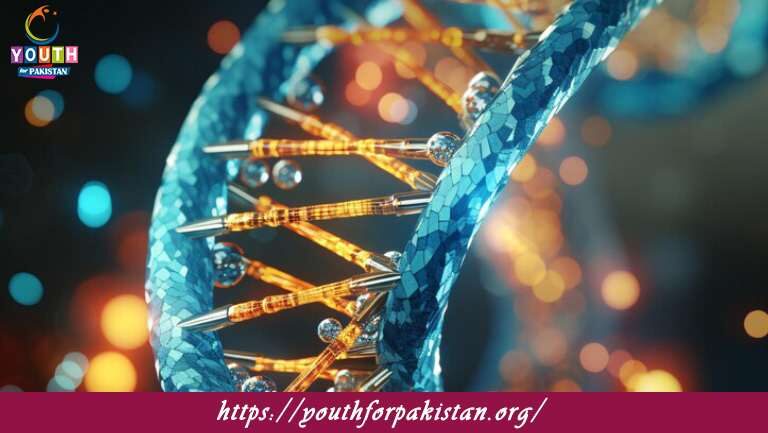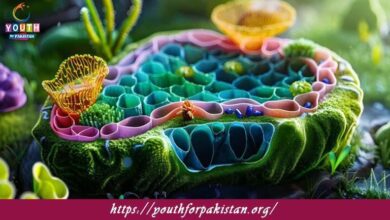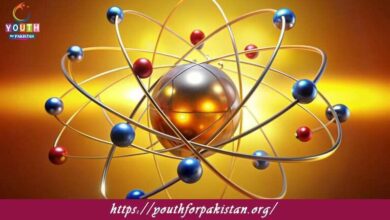10th Class Chemistry Chapter 13 MCQs with Answers

Explore the fascinating field of biochemistry with these focused MCQs. Topics include carbohydrates, proteins, lipids, and enzymes. Featuring trending keywords like “biochemistry MCQs for 10th class” and “chemistry quiz on biomolecules,” this set helps you grasp biological molecules effectively.
The building blocks of proteins are:
a) Nucleotides
b) Amino acids
c) Fatty acids
d) Monosaccharides
The main source of energy for living organisms is:
a) Proteins
b) Lipids
c) Carbohydrates
d) Nucleic acids
The process of converting glucose into energy in the presence of oxygen is called:
a) Fermentation
b) Photosynthesis
c) Respiration
d) Digestion
Which of the following is the storage form of glucose in animals?
a) Starch
b) Glycogen
c) Cellulose
d) Sucrose
The genetic material of cells is composed of:
a) Amino acids
b) Nucleotides
c) Fatty acids
d) Glucose
Which molecule stores and transfers genetic information in cells?
a) DNA
b) RNA
c) Proteins
d) Carbohydrates
The process of making new DNA molecules is called:
a) Transcription
b) Translation
c) Replication
d) Mutation
Which of the following is a monosaccharide?
a) Glucose
b) Sucrose
c) Lactose
d) Starch
The molecule that carries the genetic code from DNA to the ribosome is:
a) mRNA
b) tRNA
c) rRNA
d) DNA
Which of the following is a disaccharide?
a) Glucose
b) Sucrose
c) Lactose
d) Starch
The process of making proteins from mRNA is called:
a) Transcription
b) Translation
c) Replication
d) Mutation
Which of the following is a polysaccharide?
a) Glucose
b) Sucrose
c) Lactose
d) Starch
The molecule that transfers amino acids to the ribosome during protein synthesis is:
a) mRNA
b) tRNA
c) rRNA
d) DNA
Which of the following is a nucleotide?
a) Glucose
b) Sucrose
c) ATP
d) Starch
The process of converting light energy into glucose in plants is called:
a) Fermentation
b) Photosynthesis
c) Respiration
d) Digestion
Which of the following is a fatty acid?
a) Glucose
b) Sucrose
c) Palmitic acid
d) Starch
The process of breaking down large molecules into smaller ones to release energy is called:
a) Fermentation
b) Photosynthesis
c) Respiration
d) Digestion
Which of the following is a lipid?
a) Glucose
b) Sucrose
c) Cholesterol
d) Starch
The process of converting glucose into energy in the absence of oxygen is called:
a) Fermentation
b) Photosynthesis
c) Respiration
d) Digestion
Which of the following is not a function of proteins in living organisms?
a) Enzyme catalysis
b) Transport of oxygen
c) Storage of energy
d) Cellular structure
The molecule that carries the amino acids to the ribosome during protein synthesis is:
a) mRNA
b) tRNA
c) rRNA
d) DNA
Which of the following is a function of carbohydrates in living organisms?
a) Enzyme catalysis
b) Transport of oxygen
c) Storage of energy
d) Cellular structure
The molecule that makes up the cell membrane is primarily composed of:
a) Proteins
b) Nucleic acids
c) Carbohydrates
d) Lipids
Which of the following is a function of lipids in living organisms?
a) Enzyme catalysis
b) Transport of oxygen
c) Storage of energy
d) Cellular structure
The process of making new DNA molecules is called:
a) Transcription
b) Translation
c) Replication
d) Mutation
Which of the following is a function of nucleic acids in living organisms?
a) Enzyme catalysis
b) Transport of oxygen
c) Storage of genetic information
d) Cellular structure
The process of making proteins from mRNA is called:
a) Transcription
b) Translation
c) Replication
d) Mutation
Which of the following is not a function of proteins in living organisms?
a) Enzyme catalysis
b) Transport of oxygen
c) Storage of energy
d) Cellular structure
The molecule that carries the genetic code from DNA to the ribosome is:
a) mRNA
b) tRNA
c) rRNA
d) DNA
Which of the following is not a function of carbohydrates in living organisms?
a) Enzyme catalysis
b) Transport of oxygen
c) Storage of energy
d) Cellular structure
The molecule that transfers amino acids to the ribosome during protein synthesis is:
a) mRNA
b) tRNA
c) rRNA
d) DNA
Which of the following is not a function of lipids in living organisms?
a) Enzyme catalysis
b) Transport of oxygen
c) Storage of energy
d) Cellular structure
The process of breaking down large molecules into smaller ones to release energy is called:
a) Fermentation
b) Photosynthesis
c) Respiration
d) Digestion
Which of the following is not a function of nucleic acids in living organisms?
a) Enzyme catalysis
b) Transport of oxygen
c) Storage of genetic information
d) Cellular structure
The molecule that makes up the cell membrane is primarily composed of:
a) Proteins
b) Nucleic acids
c) Carbohydrates
d) Lipids
Which of the following is not a function of proteins in living organisms?
a) Enzyme catalysis
b) Transport of oxygen
c) Storage of energy
d) Cellular structure
The process of making new DNA molecules is called:
a) Transcription
b) Translation
c) Replication
d) Mutation
Which of the following is not a function of carbohydrates in living organisms?
a) Enzyme catalysis
b) Transport of oxygen
c) Storage of energy
d) Cellular structure
The molecule that carries the genetic code from DNA to the ribosome is:
a) mRNA
b) tRNA
c) rRNA
d) DNA
Which of the following is not a function of lipids in living organisms?
a) Enzyme catalysis
b) Transport of oxygen
c) Storage of energy
d) Cellular structure
The process of breaking down large molecules into smaller ones to release energy is called:
a) Fermentation
b) Photosynthesis
c) Respiration
d) Digestion
Which of the following is not a function of nucleic acids in living organisms?
a) Enzyme catalysis
b) Transport of oxygen
c) Storage of genetic information
d) Cellular structure
The molecule that makes up the cell membrane is primarily composed of:
a) Proteins
b) Nucleic acids
c) Carbohydrates
d) Lipids
Which of the following is not a function of proteins in living organisms?
a) Enzyme catalysis
b) Transport of oxygen
c) Storage of energy
d) Cellular structure
The process of making new DNA molecules is called:
a) Transcription
b) Translation
c) Replication
d) Mutation
Which of the following is not a function of carbohydrates in living organisms?
a) Enzyme catalysis
b) Transport of oxygen
c) Storage of energy
d) Cellular structure
The molecule that carries the genetic code from DNA to the ribosome is:
a) mRNA
b) tRNA
c) rRNA
d) DNA
Which of the following is not a function of lipids in living organisms?
a) Enzyme catalysis
b) Transport of oxygen
c) Storage of energy
d) Cellular structure
The process of breaking down large molecules into smaller ones to release energy is called:
a) Fermentation
b) Photosynthesis
c) Respiration
d) Digestion
Which of the following is not a function of nucleic acids in living organisms?
a) Enzyme catalysis
b) Transport of oxygen
c) Storage of genetic information
d) Cellular structure
The molecule that makes up the cell membrane is primarily composed of:
a) Proteins
b) Nucleic acids
c) Carbohydrates
d) Lipids
Which of the following is not a function of proteins in living organisms?
a) Enzyme catalysis
b) Transport of oxygen
c) Storage of energy
d) Cellular structure
The process of making new DNA molecules is called:
a) Transcription
b) Translation
c) Replication
d) Mutation
Which of the following is not a function of carbohydrates in living organisms?
a) Enzyme catalysis
b) Transport of oxygen
c) Storage of energy
d) Cellular structure
The molecule that carries the genetic code from DNA to the ribosome is:
a) mRNA
b) tRNA
c) rRNA
d) DNA
Which of the following is not a function of lipids in living organisms?
a) Enzyme catalysis
b) Transport of oxygen
c) Storage of energy
d) Cellular structure
The process of breaking down large molecules into smaller ones to release energy is called:
a) Fermentation
b) Photosynthesis
c) Respiration
d) Digestion
Which of the following is not a function of nucleic acids in living organisms?
a) Enzyme catalysis
b) Transport of oxygen
c) Storage of genetic information
d) Cellular structure
The molecule that makes up the cell membrane is primarily composed of:
a) Proteins
b) Nucleic acids
c) Carbohydrates
d) Lipids
Which of the following is not a function of proteins in living organisms?
a) Enzyme catalysis
b) Transport of oxygen
c) Storage of energy
d) Cellular structure
If you are interested to enhance your knowledge regarding Physics, Chemistry, Biology, and Computer please click on the link of each category, you will be redirected to dedicated website for each category.





